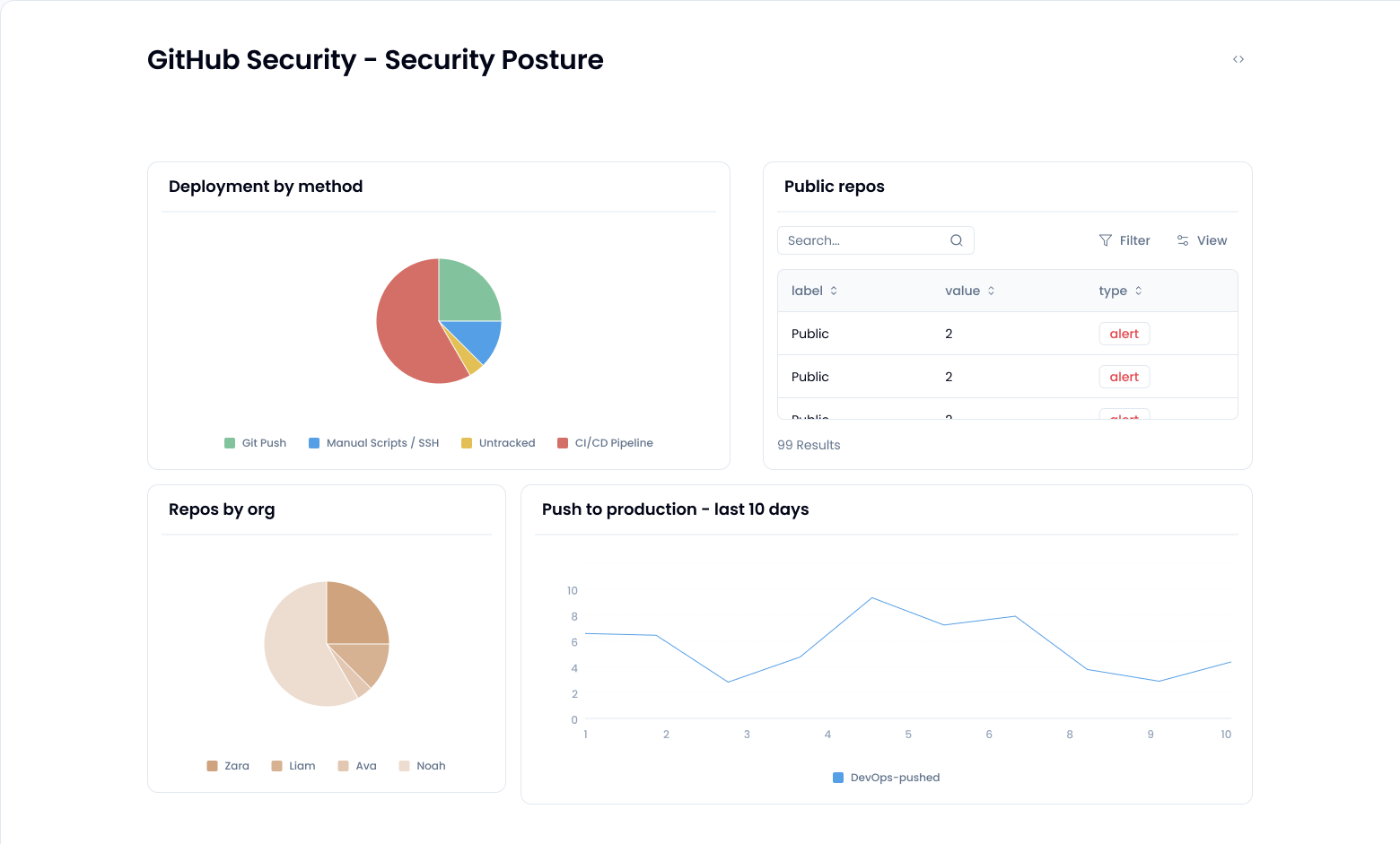No CI/CD? No problem. Track deployments, get insights, and stay secure
Skipping CI/CD doesn’t mean you skip GitHub security. If your deploys are manual, scripted, or handled elsewhere, you can still get real answers: who deployed what, was it safe, and what changed? Sola makes that dead simple. Build your own GitHub security app, powered by AI, and get alerts, trends, and suspicious activity insights – all tailored to your environment.
Sola apps that could help you
Visit the App GalleryGitHub gives you deployment history, but not context
GitHub’s deployment tracking doesn’t require a pipeline. You can manually post deployment records via API or script. These can be tied to specific commits, environments, and users. You also get deployment status events, which help track whether something actually made it to production.
But here’s the catch: this shows what happened, not whether it was a good idea. You won’t know if a deploy bypassed review policies, introduced secrets, or came from an unverified source. That’s the missing piece – GitHub repository security without CI/CD needs more than logs. It needs correlation and interpretation.
With Sola, you can connect deployment events to audit logs, code changes, and user behavior. You’ll know if a deploy happened outside working hours, if the committer wasn’t the deployer, or if sensitive files were touched. And if something smells off—you’ll get an alert.
Keep your GitHub secure even without full automation
Even if you’re not running CI/CD, GitHub repository security basics still apply:
- Lock down branches with protection rules and reviews
- Rotate deploy keys and enforce secret scanning
- Restrict access to the minimal set of users and tokens
- Track push and deployment activity, even if it’s “just a script”.
Sola’s GitHub Security Activity app helps you monitor these without writing policy as code or building a full pipeline. It gives you the insights and alerts you actually care about, based on your real workflows.
You can build a custom app to track deploys, correlate actions, and decide if something needs fixing. No need for a CI/CD pipeline, just connect your GitHub repo, pick your questions, and go.
Whether you’re debugging a weird deploy or trying to prove nothing risky shipped, you’ll have the answer.
Answer more security questions
How to check GitHub repo branch protection?
How to secure AWS API gateway?
Cyber security for startups: Where to Start?
